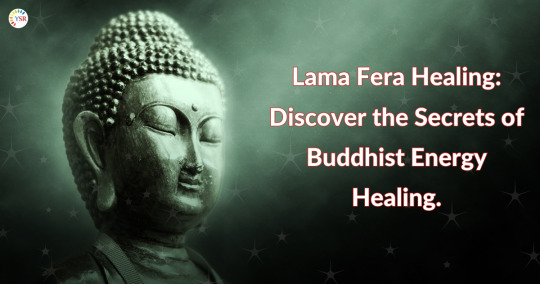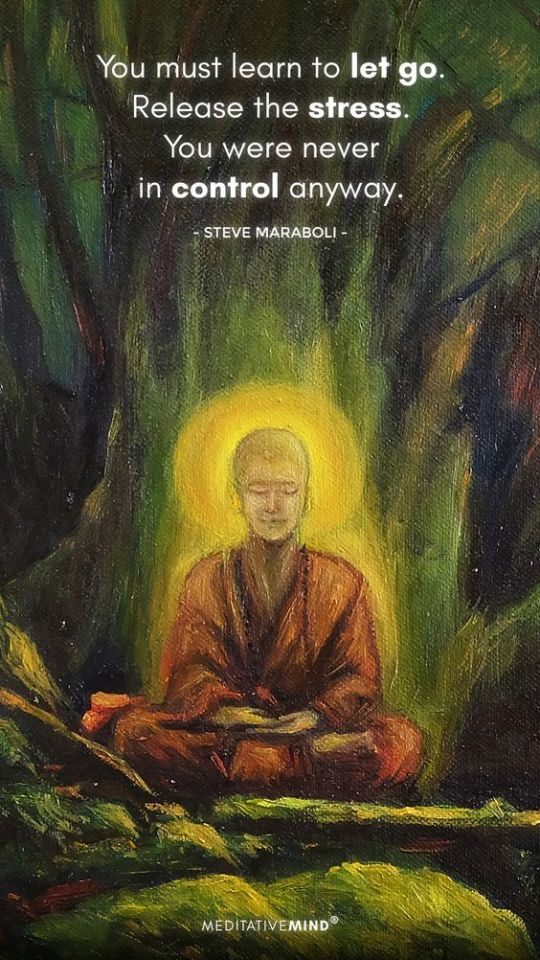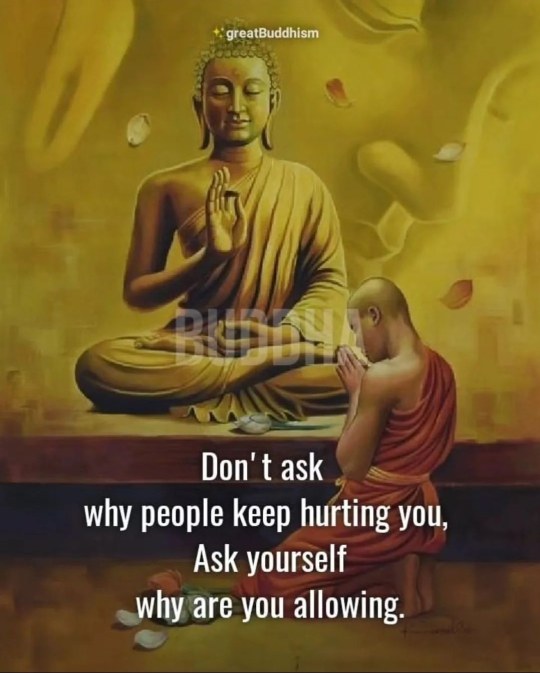#buddhist meditation
Explore tagged Tumblr posts
Text


Guy the Cat is usually more murderous than meditative, but he does have his contemplative moments.
11 notes
·
View notes
Text
Stillness as a Shared Thread: Rediscovering the Contemplative Heart Across Faiths
It was two thirty in the morning. I sat in silence, trying to rest into stillness. The world around me slept, yet within me, a gentle inquiry stirred: Why is it that only certain traditions teach us to dwell in this quiet space? In my journey through interfaith dialogue, I’ve noticed something curious. In Buddhist practice—and in the Advaita Vedanta stream of Hinduism—stillness isn’t peripheral.…
#Advaita Vedanta#be still and know#breath and stillness#Buddhist meditation#Christian Mysticism#contemplative practice#faith and stillness#Inner peace#inner stillness practice#Interfaith dialogue#interfaith reflection#interspirituality#Jewish spirituality#meditation#meditation across religions#mindful presence#Mindfulness#mindfulness in religion#mystical practice#non-duality#religious contemplation#sacred silence#sacred traditions#Self-Realization#silence in faith#silence in prayer#Spiritual Awakening#spiritual growth#spiritual journey#Spiritual Practice
2 notes
·
View notes
Text
Morning Meditaton — Do you want to know Manjusri?
Morning Meditaton — Do you want to know Manjusri? https://wp.me/pFy3u-8l0
‘Do you want to know Manjusri? He is here right before your eyes functioning ceaselessly without change, This is the living Manjusri.’ Zen Master Rinzai Clouds above the trees. On our Twitter account, Buddhism Now @Buddhism_Now, most mornings we post a ‘morning meditation’ like the one above. On the net, of course, it’s morning, afternoon, evening, or nighttime 😀 somewhere. Click here to…

View On WordPress
2 notes
·
View notes
Text
10 Amazing Advantages of Meditation
Discover the incredible advantages of meditation in this captivating video! From stress reduction and improved mental clarity to enhanced creativity and better sleep, meditation offers a multitude of benefits. Explore how meditation promotes emotional well-being, increases self-compassion, and improves physical health. Learn how it enhances focus, attention, and relationships while fostering spiritual growth. Join us on this transformative journey and unlock the power of meditation in your life. Don't miss out, watch now!
MeditationBenefits #MindfulnessAdvantages #StressReduction #MentalClarity #EmotionalWellBeing #CreativityBoost #SelfCompassion #BetterSleep #PhysicalHealth #FocusAndAttention #RelationshipImprovement #SpiritualGrowth #TransformativeJourney #InnerPeace #MindBodyConnection #SelfAwareness #StressManagement #ProductivityEnhancement #PersonalGrowth #MindfulLiving
youtube
#youtube#mindfulness#motivación#positivity#success#meditation advantages#meditation#buddhist meditation
3 notes
·
View notes
Text
Lama Fera Healing: Discover the Secrets of Buddhist Energy Healing.
Are you ready to discover the ancient secrets of Lama Fera Healing?
Learn powerful techniques to harness and channel positive energy, release negativity, and restore balance in your mind, body, and spirit. 🌈💆♀️✨
Let the secrets of this sacred practice guide you towards inner peace and well-being. 🌟💞

3 notes
·
View notes
Text

Change Yourself to Change the World: Practicing Insight Meditation
How do we find contentment in the external world where everything is impermanent and ultimately out of our control? In this inspirational talk, Dharma Teachers Doug and Catherine Sensei share how Insight meditation (a.k.a. Vipassana) can help you address life’s struggles, including indecisiveness, anger, and over-consumption.
They teach that to transform the world around you, you must first transform your internal world: “Change your view, to change your conduct.” By looking closely at the nature or pathology of struggle, and clearly understanding the problem, we begin to understand the solution. It starts with ourselves.
Know More about Meditation Insights:- https://www.planetdharma.com/change-yourself-to-change-the-world-practicing-insight-meditation/
#Meditation#Meditation Insight#Practicing Insight Meditation#Struggle#buddhist meditation#meditation practice
0 notes
Text
When you walk away from your troubles
When you walk away from your troubles, there are no good byes to be said. When you walk away from your troubles, there are no tears to be shed because all you have lost is trouble. When you walk away from your troubles, there is no sadness felt for all that you have left behind. When you walk away from your troubles, there can be no regrets for the good decision you have made for…

View On WordPress
0 notes
Text

The resting mind and the moving mind are the union of emptiness and luminosity. We perceive differences due to our confusion. Stillness does not obstruct motion, and motion does not obstruct stillness. They are simply one inseparable entity.
~ Thrangu Rinpoche
68 notes
·
View notes
Text
Peace is within oneself to be found in the same place as agitation and suffering. It is not found in a forest or on a hilltop, nor is it given by a teacher. Where you experience suffering, you can also find freedom from suffering. Trying to run away from suffering is actually to run toward it.
-Ajahn Chah
#ajahn chah#quote#peace#calm#stillness#life#wisdom#inner peace#love#happiness#spiritual#buddhism#buddhist#pyschology#yogi#meditation
352 notes
·
View notes
Text

Metta (Lovingkindness) Meditation
6 notes
·
View notes
Text
From Suffering to Compassion: Transforming Life with ME/CFS
Living with chronic fatigue syndrome (ME/CFS) often feels like carrying an invisible weight that never goes away. The exhaustion is far beyond ordinary tiredness, permeating not just the body but the mind and heart as well. For many of us, this illness can feel like a curse, a complete derailment of life’s trajectory. Yet, over the years, I’ve come to see it also as a strange and unexpected…
#Advaita Vedanta#Buddhist meditation#calm-abiding meditation#chronic fatigue syndrome#chronic illness support#chronic pain and mindfulness#cultivating compassion#Dark Night of the Soul#equanimity in illness#Four Noble Truths#loving-kindness meditation#ME/CFS#meditation for healing#mental health and ME/CFS#Metta meditation#mindfulness for chronic illness#Noble Eightfold Path#Post-Viral fatigue#Samatha meditation#sensory deprivation#spiritual growth with chronic illness#Spiritual Practice#Tibetan Buddhism#Vipassana#Vipassana meditation#witnessing the mind
1 note
·
View note
Text
Afternoon Meditaton — If someone asks me where to look for Buddha.
Morning Meditaton — If someone asks me where to look for Buddha. https://wp.me/pFy3u-8au
‘If someone asks me where to look for Buddha, I will show myself in a state of purity.’ Zen Master Rinzai Big sky over Totnes. On our Twitter account, Buddhism Now @Buddhism_Now, most mornings we post a ‘morning meditation’ like the one above. On the net, of course, it’s morning, afternoon, evening, or nighttime 😀 somewhere. Click here to read more Morning Meditation posts. Click here for…

View On WordPress
2 notes
·
View notes
Text
"You must be broad-minded and whole without relying upon others. An upright, independent spirit knows how to avoid degrading situations." - Hongzhi Zhengjue (1091-1157)
#buddhism#zen#buddhist#innerpeace#buddha#buddhism quotes#zenquotes#dharma#buddhist quotes#spirituality#meditation#meditate
107 notes
·
View notes
Text
The Philosophy of Buddhism
Buddhism is a spiritual and philosophical tradition that originated in India around the 5th century BCE with the teachings of Siddhartha Gautama, known as the Buddha. Buddhism encompasses a wide range of beliefs, practices, and schools of thought, but at its core, it is concerned with understanding the nature of suffering, the path to its cessation, and the ultimate realization of enlightenment.
Key Themes in the Philosophy of Buddhism:
The Four Noble Truths:
Dukkha (Suffering): The first noble truth is the recognition that life is permeated by dukkha, often translated as suffering, dissatisfaction, or stress. This includes both the obvious sufferings of pain, aging, and death, as well as more subtle forms of mental unease and dissatisfaction.
Samudaya (Origin of Suffering): The second noble truth identifies the cause of suffering as tanha (craving or desire) and ignorance (avidya). This craving is not only for physical pleasures but also for existence, non-existence, and various forms of attachment.
Nirodha (Cessation of Suffering): The third noble truth asserts that it is possible to end suffering by extinguishing its causes, namely craving and ignorance. This state of cessation is known as Nirvana, which represents the ultimate liberation from the cycle of rebirth and suffering.
Magga (Path to the Cessation of Suffering): The fourth noble truth outlines the path to the cessation of suffering, known as the Noble Eightfold Path. This path provides a practical guide to ethical living, mental discipline, and wisdom.
The Noble Eightfold Path:
Right Understanding (Samma Ditthi): This involves understanding the true nature of reality, particularly the Four Noble Truths.
Right Intention (Samma Sankappa): Cultivating intentions of renunciation, goodwill, and harmlessness.
Right Speech (Samma Vaca): Speaking truthfully, avoiding gossip, lies, and harmful speech.
Right Action (Samma Kammanta): Acting in ways that are ethical and non-harmful, following principles like non-violence and honesty.
Right Livelihood (Samma Ajiva): Engaging in work that does not harm others and is ethically sound.
Right Effort (Samma Vayama): Cultivating positive states of mind and preventing unwholesome states.
Right Mindfulness (Samma Sati): Maintaining awareness of thoughts, feelings, and actions, leading to greater self-understanding and wisdom.
Right Concentration (Samma Samadhi): Developing deep states of meditation that lead to profound insights and the cultivation of wisdom.
The Three Marks of Existence:
Anicca (Impermanence): Everything in life is in a constant state of flux. All phenomena are transient, and clinging to anything as permanent leads to suffering.
Dukkha (Suffering): Suffering is an inherent part of existence, arising from the impermanent and unsatisfactory nature of life.
Anatta (Non-Self): There is no permanent, unchanging self or soul (atman). The belief in a permanent self is an illusion that contributes to suffering.
Karma and Rebirth:
Karma (Action and Consequence): Karma refers to the moral law of cause and effect, where intentional actions lead to corresponding consequences. Good actions lead to positive results, and bad actions lead to negative outcomes, both in this life and future lives.
Rebirth (Samsara): Buddhism teaches that beings are trapped in a cycle of birth, death, and rebirth (samsara), driven by karma and craving. The ultimate goal is to escape this cycle by attaining Nirvana.
Nirvana:
Liberation from Suffering: Nirvana is the ultimate goal in Buddhism, representing the cessation of all suffering, the end of the cycle of rebirth, and the realization of ultimate truth. It is a state of peace, liberation, and enlightenment.
Beyond Dualities: Nirvana transcends all dualities and conceptual distinctions, including the dichotomy of existence and non-existence.
Meditation and Mindfulness:
Central Practices: Meditation (bhavana) and mindfulness (sati) are central practices in Buddhism, aimed at cultivating concentration, insight, and mental clarity. These practices help individuals develop a deep understanding of the nature of reality and the mind.
Vipassana and Samatha: Two main types of meditation in Buddhism are Vipassana (insight meditation), which focuses on gaining insight into the true nature of reality, and Samatha (calm-abiding meditation), which develops concentration and tranquility.
The Middle Way:
Avoiding Extremes: The Buddha taught the Middle Way as a path that avoids the extremes of self-indulgence and self-mortification. It represents a balanced approach to spiritual practice that leads to enlightenment.
Practical Wisdom: The Middle Way also refers to the balanced application of wisdom in everyday life, guiding ethical conduct and mental development.
Dependent Origination (Pratītyasamutpāda):
Interconnectedness of All Phenomena: Dependent origination is the principle that all phenomena arise in dependence upon other phenomena. This interconnectedness means that nothing exists independently, and everything is part of a complex web of cause and effect.
Causality and the Cycle of Suffering: Understanding dependent origination is key to understanding the cycle of suffering (samsara) and how to break free from it.
Ethical Conduct:
The Five Precepts: Buddhism provides a set of ethical guidelines known as the Five Precepts, which include abstaining from killing, stealing, sexual misconduct, lying, and intoxication. These precepts help cultivate moral discipline and support the path to enlightenment.
Compassion and Loving-Kindness (Metta): Compassion (karuna) and loving-kindness (metta) are central ethical values in Buddhism, encouraging individuals to act with care and concern for the well-being of others.
Schools of Buddhist Philosophy:
Theravada Buddhism:
Focus on Early Teachings: Theravada, also known as the "Teaching of the Elders," adheres closely to the early teachings of the Buddha and emphasizes individual liberation through wisdom and ethical conduct.
Arhat Ideal: The goal in Theravada is to become an Arhat, an enlightened being who has attained Nirvana and is free from the cycle of rebirth.
Mahayana Buddhism:
Great Vehicle: Mahayana, or the "Great Vehicle," offers a broader interpretation of the Buddha's teachings and emphasizes the Bodhisattva path, where practitioners strive to attain enlightenment for the benefit of all beings.
Emptiness (Shunyata): Mahayana philosophy introduces the concept of emptiness, which suggests that all phenomena are empty of inherent existence, highlighting the interdependence and impermanence of all things.
Vajrayana Buddhism:
Diamond Vehicle: Vajrayana, or the "Diamond Vehicle," is an esoteric form of Buddhism that incorporates rituals, mantras, and meditation practices aimed at achieving rapid enlightenment. It is closely associated with Tibetan Buddhism.
Tantric Practices: Vajrayana involves complex tantric practices that are believed to transform the mind and body, leading to enlightenment.
The philosophy of Buddhism is a profound exploration of the nature of existence, suffering, and the path to liberation. Through its teachings on impermanence, non-self, dependent origination, and the cultivation of compassion, Buddhism offers a comprehensive framework for understanding and overcoming the challenges of life. Its emphasis on mindfulness, ethical conduct, and wisdom provides practical guidance for achieving inner peace and spiritual awakening. Whether through individual practice or engagement with the broader community, Buddhism continues to inspire and guide people in their quest for meaning, peace, and liberation.
#philosophy#epistemology#knowledge#learning#education#chatgpt#ontology#metaphysics#ethics#Buddhism#Four Noble Truths#Noble Eightfold Path#Dukkha (Suffering)#Anicca (Impermanence)#Anatta (Non-Self)#Karma and Rebirth#Nirvana#Meditation and Mindfulness#Middle Way#Dependent Origination#Theravada Buddhism#Mahayana Buddhism#Vajrayana Buddhism#Engaged Buddhism#Buddhist Ethics#Buddhist Philosophy#Bodhisattva Path#Compassion (Karuna)#Loving-Kindness (Metta)#Mindfulness (Sati)
34 notes
·
View notes
Text

128 notes
·
View notes



